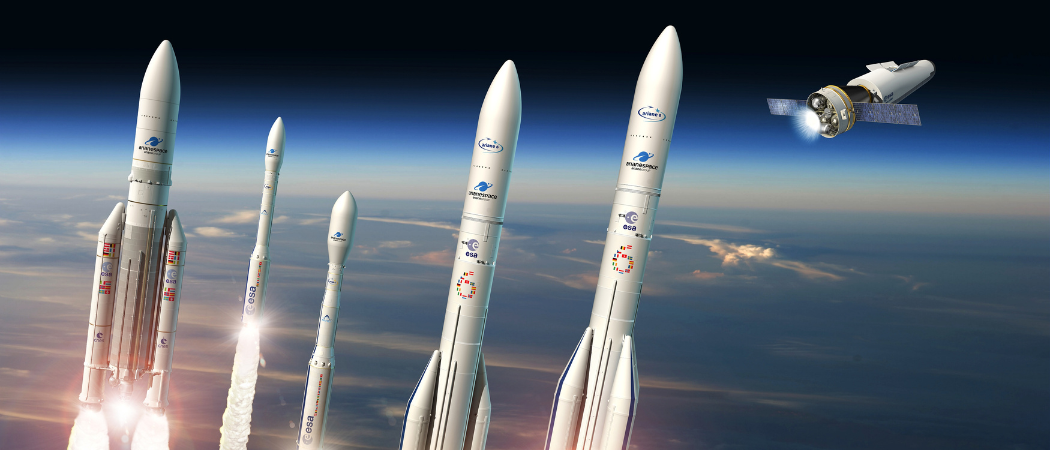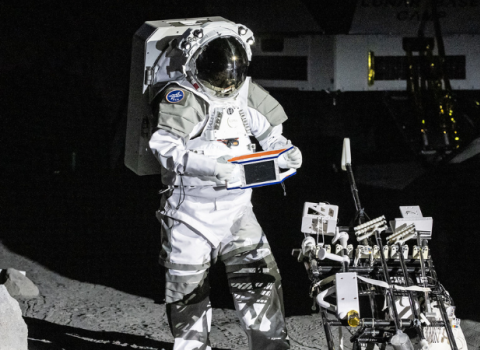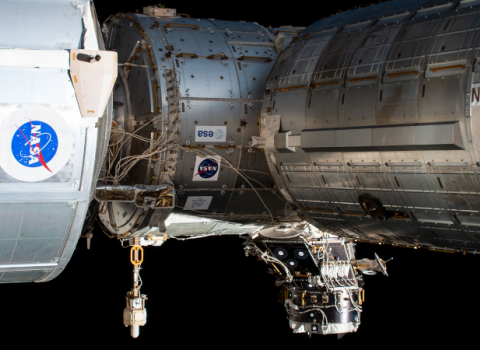Modest funding increases will not be enough to give Europe autonomy in space and allow it to compete with the US and China, says European Space Agency

From left to right, Ariane 5, Vega, Vega-C, Ariane 62, Ariane 64 and Space Rider. Photo credits: ©ESA
Europe must significantly increase its space investment if it is to close the gap with the US and China, according to the European Space Agency (ESA).
In a new strategy document, looking forward to 2040, the agency highlights the recent surge in global public and private investment in space. The US is leading the way, China is expanding rapidly, but Europe is struggling to keep pace, despite gradual funding increases.
“When we see the percentage that we invest in R&D and space compared with other economies of our size or other world powers, I think Europe needs to lift the levels,” said Heriberto Saldivar, ESA’s head of strategy, in an interview with Science|Business.
French MEP Christophe Grudler, who chairs the Sky and Space Intergroup in the European Parliament, echoed this concern. “The biggest difference between Europe and the US is money; we invest six times less in space,” he said.
Grudler pointed to SpaceX as a prime example of this divide: “SpaceX is a top-tier private company, receiving $20 billion in US government subsidies.” To bridge the gap, Grudler and other MEPs are pushing for €60 billion in the next EU Space Programme, a significant increase from the current €14.8 billion.
The 23 governments that back ESA will gather in late November to determine the agency’s next three-year budget. In 2022, ESA’s ministerial council approved a €16.9 billion budget to enhance Europe’s position in space, but this was quickly judged insufficient to compete with China and the US.
Meanwhile, the European Commission is set to unveil its EU Space Act proposal on June 25, a move that could further shape the future of European space policy.
Related articles:
- European Space Agency €16.9B budget not enough to catch up with US and China, says industry
- Europe seeks leading role in burgeoning space economy
Launching from Norway
With the need to strengthen Europe’s space exploration and launch capabilities a strong theme in the strategy, attention has focused on the first attempt to launch an orbital rocket from continental Europe.
On March 30, Germany’s Isar Aerospace launched a Spectrum rocket from a commercial spaceport in northern Norway, only to see it crash into the sea 30 seconds later. While many news outlets labelled the event a failure, ESA’s Saldivar told Science|Business that it was anything but.
“The rocket was a prototype, created using 3D metal printing for an extremely high-pressure, high-temperature environment,” he said.
Rather than a setback, the launch provided valuable data to refine the Spectrum rocket for future missions. These are already underway, Isar Aerospace stated after the launch.
Saldivar said that Europe needs to support innovation rather than undermine it, particularly in a sector where the US and China lead in investment, but not necessarily in technology.
“I think it is important to make people realise that the best observation platform in the world is European, our scientific missions are reference worldwide;” he told Science|Business, referring to Galileo. “The best deep space antennas in the world are European, and the best navigation technology.”
Grudler meanwhile highlighted Iris2 as another milestone in European space technology. This is the EU’s planned secure satellite communications system, which will enhance cybersecurity, connectivity and strategic autonomy in space. “It will be the first in the world to have quantum communication technology,” he said.
Crucially, European space programmes such as Iris2 insist that all onboard components are of European origin. “We need to have strategic autonomy, a kind of independence,” he said, to prevent external actors from intercepting communications.
This is the first time in its 50-year history that ESA has adopted a long-term vision. The strategy for 2040 focuses on five core goals: protecting the planet and the climate, exploration and discovery, strengthening European autonomy and resilience, boosting European growth and competitiveness, and inspiring Europe.





 A unique international forum for public research organisations and companies to connect their external engagement with strategic interests around their R&D system.
A unique international forum for public research organisations and companies to connect their external engagement with strategic interests around their R&D system.